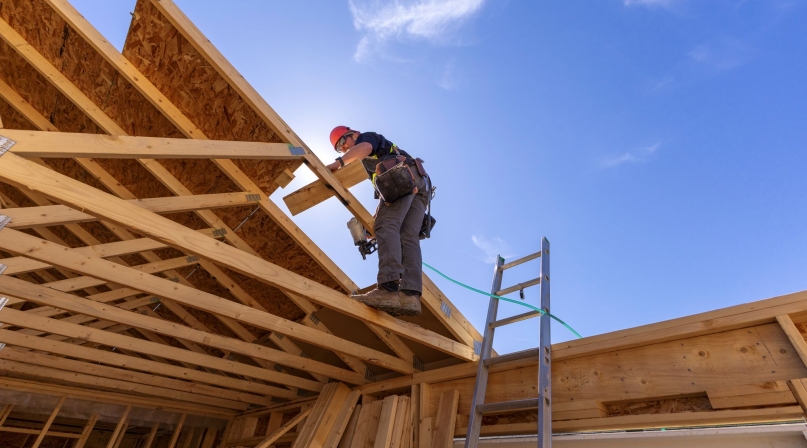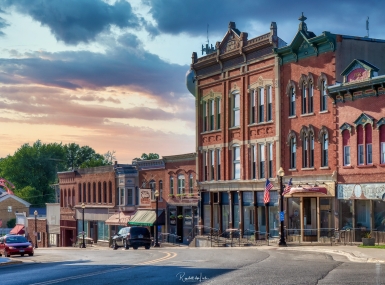Counties unlock public land for affordable housing

As the national housing crisis deepens, counties are finding new ways to put roofs over people’s heads.
In Baltimore City, Md. and Shelby County, Tenn., two different but related efforts are showing how local governments can leverage county-owned land to expand housing opportunities and give families a better shot at stability. Stable affordable housing doesn’t just determine where families live; it shapes their access to jobs, schools, transportation and community resources that make upward economic mobility possible.
Both Baltimore and Shelby County are part of NACo’s Counties for Housing Solutions (C4HS) program, created in 2024 in partnership with Smart Growth America. The program provides county teams — including elected officials, agency staff and housing partners — with virtual technical support and individualized coaching. Both counties are leveraging publicly owned land to address housing shortages, demonstrating promising practices that could be replicated nationwide.
In East Baltimore, a vacant block near the Johns Hopkins Hospital has long stood as a reminder of disinvestment in this neighborhood. Now, the city is working with a developer to turn the empty lots into a 100-unit apartment building, with 50 apartments permanently affordable to low-income residents.
Baltimore City has worked with Broadway East Community Development Corporation President Doris Minor-Terrell and local developer Jimmie Robinson. The city will transfer to the developer an approximately 3-acre site at no acquisition cost in exchange for the project’s inclusion of 50 permanently low-income apartments.
The developer, community association and consolidated city-county government collaborated on a financing plan and determined that this zero-cost land transfer would enable the construction of 100 units of housing, half of which will be below-market rate housing. In a scenario where this deal does not happen, the parcel of land would have sat vacant.
Robinson financed 50 low-income apartments through a combination of Low-Income Housing Tax Credit subsidies, public land and rental revenue from the other 50 market-rate apartments.
The project will also include flexible space for a community meeting area and ultimately leasable as a grocery store.
Robinson recalled that, “in 1962, my grandfather Jimmie Robinson Jr. began his ministry of serving the Broadway East community as the founder of Salem Baptist Church. Furthermore, Dr. Doris Minor-Terrell played a pivotal part in my father’s life, my own life and the lives of many other close family friends.
To now have the opportunity to work alongside her in the mission to revitalize a historic community with endless possibilities and potential is nothing short of a blessing. Our goal for the proposed project is to advance the community’s mission of creating a stable mixed-income community through creating economic opportunities and providing amenities for residents.”
The project has already drawn interest from major funders, including JPMorganChase and Bloomberg Philanthropies, which are exploring ways to help ensure long-term affordability and financial feasibility. The agreement could become a blueprint for transforming public land into lasting affordable housing.
Shelby County passes ordinance
While Baltimore is transforming an urban vacant block, Shelby County, Tenn. is building on multiple, non-contiguous parcels across a whole neighborhood. The approach looks different but carries the same urgency and public land use approach. Earlier this year, county commissioners passed the Building Home Ordinance, which allows the county to partner directly with the city of Memphis on housing projects. For families struggling with rising rents, that decision could accelerate development on unused or underutilized parcels of publicly owned land, turning them into homes.
Commissioner Erika Sugarmon led the effort to pass this ordinance, which directs the county to partner with real estate developers to develop 83 vacant parcels South Memphis.
This land is managed by the Shelby County Land Bank and has remained undeveloped for decades. Years of underinvestment in this area has left the neighborhood without comparable listings for housing units to evaluate development potential. Without value comparisons, private development has stalled, and the county has missed out on property tax revenue.
“Shelby County is building more than housing — we’re building a movement,” she said. “Government, private, nonprofit and community leaders are shaping an evolving ecosystem that transforms how we think about housing access, equity and opportunity. Our shared vision is to create a living model — one that continuously learns, grows and can be replicated across districts and counties — ensuring that every family has a place to call home and every community has the foundation to thrive.”
Shelby County will transfer land parcels in a 20-city block area to a cohort of 15 to 20 early-career developers who will participate in the Emerging Developers Academy. Led by Memphis real estate professional Rasheedah Jones and funded by a grant from the U.S. Economic Development Administration (EDA), the Emerging Developers Academy will build technical capacity starting in October 2025 and work on small-scale residential developments with predevelopment capital secured from a local community development financial institution. The hope is that this initial investment will spark a wave of private sector investment in the community with comps established.
“Shelby County is taking a bold step toward reimagining how public land can serve the public good,” Jones said. “We’re equipping local community-rooted developers with the tools, technical assistance and partnerships to turn what’s been sitting idle into something that works for the community.”
Counties are uniquely equipped to act because they control zoning and permitting and often own valuable land. By lowering land costs and streamlining approvals, counties can create “natural affordability” — making it possible for developers to build while keeping rents within reach.
With public budgets strained by high interest rates, rising construction costs and reduced federal funding, counties are using publicly owned land to boost affordable housing without straining limited resources.
This strategy may generate long-run county revenue by bringing vacant parcels onto the property tax rolls and attracting new residents and workers to the county.
Baltimore’s project is still in negotiations and Shelby County’s new ordinance has yet to produce its first housing deal. But these projects could demonstrate how counties — often overlooked in the housing debate — can take meaningful steps to ease the crisis.
Related News

Counties and Railroads: Shared Priorities for the Next Surface Transportation Bill
County leaders from across the country have a vital opportunity to ensure their infrastructure priorities are front and center.

House reintroduces bipartisan legislation to level playing field for rural communities
House reintroduced the Rural Partnership and Prosperity Act, bipartisan legislation intended to advance economic development in rural counties and overcome barriers to obtaining federal funding and resources.

Podcast: Eastern Tennessee counties invest in tourism during shutdown
Sevier County, Tenn. refused to let the government shutdown devastate its fall tourism draw—Great Smoky Mountains National Park. County Mayor Larry Waters describes the lengths he and his neighbors went to keep the park open. And NACo Chief Government Affairs Officer Mark Ritacco offers an outlook on what counties can take away from the shutdown and into the future.
County News
County News Hot Topics: Housing Affordability

